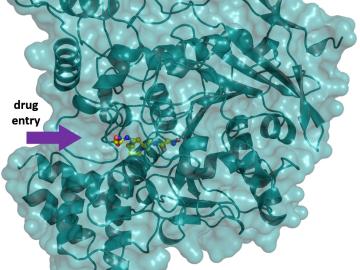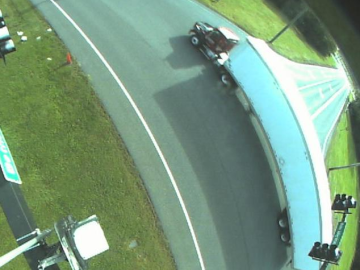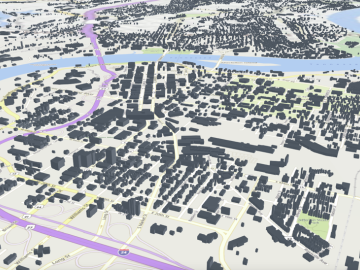
Filter News
Area of Research
- Biology and Environment (5)
- Clean Energy (21)
- Climate and Environmental Systems (2)
- Computer Science (1)
- Energy Sciences (1)
- Fusion and Fission (1)
- Fusion Energy (4)
- Isotopes (2)
- Materials (15)
- Materials for Computing (1)
- National Security (5)
- Neutron Science (5)
- Nuclear Science and Technology (5)
- Nuclear Systems Modeling, Simulation and Validation (2)
- Supercomputing (6)
News Type
Date
News Topics
- 3-D Printing/Advanced Manufacturing (4)
- Advanced Reactors (6)
- Artificial Intelligence (2)
- Big Data (3)
- Bioenergy (1)
- Biology (3)
- Biomedical (9)
- Chemical Sciences (2)
- Climate Change (5)
- Computer Science (9)
- Coronavirus (7)
- Energy Storage (9)
- Environment (10)
- Frontier (1)
- Fusion (5)
- Grid (4)
- Isotopes (2)
- Machine Learning (3)
- Materials Science (9)
- Mathematics (1)
- Microscopy (3)
- Molten Salt (1)
- Nanotechnology (3)
- Neutron Science (6)
- Nuclear Energy (9)
- Physics (7)
- Polymers (2)
- Security (1)
- Summit (5)
- Sustainable Energy (8)
- Transportation (4)
Media Contacts

While some of her earth system modeling colleagues at ORNL face challenges such as processor allocation or debugging code, Verity Salmon prepares for mosquito swarms and the possibility of grizzly bears.

In the Physics Division of the Department of Energy’s Oak Ridge National Laboratory, James (“Mitch”) Allmond conducts experiments and uses theoretical models to advance our understanding of the structure of atomic nuclei, which are made of various combinations of protons and neutrons (nucleons).

As a teenager, Kat Royston had a lot of questions. Then an advanced-placement class in physics convinced her all the answers were out there.

Scientists at Oak Ridge National Laboratory used a focused beam of electrons to stitch platinum-silicon molecules into graphene, marking the first deliberate insertion of artificial molecules into a graphene host matrix.

Oak Ridge National Laboratory researchers working on neutron imaging capabilities for nuclear materials have developed a process for seeing the inside of uranium particles – without cutting them open.

Ilias Belharouak is leading ORNL’s research efforts in investigating new materials for solid-state batteries, which can double the charging capacity of lithium-ion batteries, commonly used today for electronic devices such as cell phones.

In the most comprehensive, structure-based approach to date, a team of scientists may have discovered a new family of antidotes for certain poisons that can mitigate their effects more efficiently compared with existing remedies.

Large trucks lumbering through congested cities could become more fuel efficient simply by not having to stop at so many traffic lights.

Oak Ridge National Laboratory researchers have developed a modeling tool that identifies cost-effective energy efficiency opportunities in existing buildings across the United States.

Joe Paddison, a Eugene P. Wigner Fellow at the Department of Energy’s Oak Ridge National Laboratory, believes there’s more information to be found in neutron scattering data than scientists like himself might expect.


